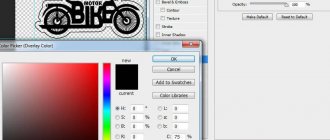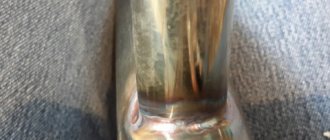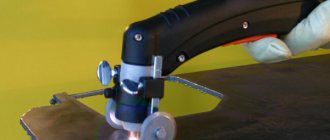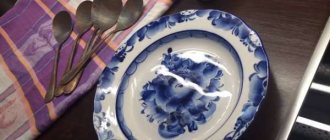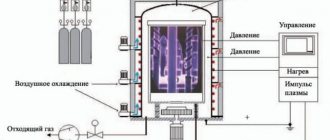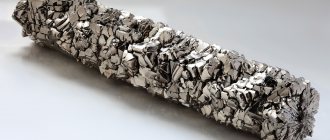The process of metal etching has been known to people since the 16th century. The most famous masters lived in Italy and Germany. Today, anyone in the world can do knife etching at home. The availability of reagents and many methods allows you to do this without special experience. But it’s definitely worth studying the topic of knife etching.
Etching a design on a knife at home.
The essence of the method
The key factor is the effect of acidic environments on the metal. Due to the interaction of the aggressive environment and the product, a chemical process called etching occurs. To apply a pattern to the blade, areas of the surface not intended for etching are covered with a protective layer.
It must be resistant to the etching substance. The depth of metal dissolution depends on the time of exposure to it. Since the 16th century, several effective methods for etching knives have been identified. They will be discussed below.
How to get a faded color?
To achieve a faded color on the surface of your product, you need to know very well at what temperature it appears and what duration of heating is necessary to fix it on the metal. The main condition: firing with a flame must take place for a strictly defined time. Therefore, if you want to enhance your product with a tan color, choose a small item, because it will be almost impossible to heat a large area of metal evenly on a gas stove or blowtorch.
Once you have achieved the desired color, immediately remove the product from the heat and let it cool. Then rub it with oil to set the color.
Metal etching methods
Acids in the etching technique are used depending on the type of metal. A certain alloy requires its own aggressive substances. The speed and quality of the process depends on this. There are several ways:
- a process using an electrolyte with current passing through it. They call it electrochemical. Its features are: precise drawing, saving time and working fluid solution. No harmful fumes;
- a process that does not require complex equipment and is incredibly simple - chemical . But the use of liquid acidic solutions is characterized by emissions of fumes harmful to human health into the air;
- production method requiring expensive equipment - ion plasma method. Used in dry environments in the field of microelectronics.
The first two methods are widely used for etching knives at home. The components are commercially available and do not require complex manipulations.
Types of blade surface coating:
In this case, unlike mechanical processing, a layer of one or another material is applied to the surface of the blade. Depending on the type of coating, it can not only give the surface a matte tint, but also provide additional protection against corrosion and make the surface extremely resistant to wear.
The cost of coverage can vary widely. While powder or varnish coatings are relatively inexpensive, titanium aluminum nitride hard coatings will add significant value to the product. It should be noted that not every coating method is suitable for blades.
If the temperature of the material during the coating procedure is higher than the tempering temperature of the blade, then the blade loses its hardness, so care should be taken that the temperature does not rise too high.
Blueing is unlikely to protect the blade from rust or wear, so this coating method is usually used for those grades of steel from which bayonets and inexpensive combat knives are mainly made.
Powder and varnish coatings
Taking into account the different properties of coatings, it is always necessary to choose them depending on the quality of the blade steel and the profile of its tactical use. Powder and varnish coatings are primarily used on steel alloys that are susceptible to corrosion. A layer of such coatings completely protects the steel surface from external influences.
The blade, of course, remains a weak point, since during subsequent sharpening the coating is removed, after which the blade is easily susceptible to corrosion. Powder and varnish coatings are therefore not as wear-resistant as hard-material coatings, but in terms of cost they are inexpensive methods to blue rusting blades while protecting them from corrosion.
The most common types of powder coating are epoxy powder or Teflon-S. Due to the electrostatic charge, powder particles are applied to the surface of the blade, after which they are sintered under high temperature.
Unfortunately, the coating layer is quite thick in most cases, causing the corners and edges of the blade to look awkward. Calgard is a type of varnish that is applied to the surface of the blade using a spray bottle, and the thickness of the layer can be changed as desired. After applying the varnish, the blade is placed in an oven for one hour at a temperature of 160 ° C, where the varnish particles are sintered into a hard layer.
Preparing metal for drawing
It is necessary to prepare the blade for drawing and for the etching process itself. If the knife is collapsible, be sure to disassemble it. Freeing the blade will make it easier to work. In a one-piece product, the handle must be insulated.
It doesn’t matter what material it is made of, an acidic environment will harm anyone. Electrical tape as an insulator will work perfectly. The surface of the blade to be treated must be thoroughly wiped with acetone. The intended design will fit well on a degreased surface. We try not to touch the workpiece with our fingers.
Drawing methods
A pattern made from various materials serves as a protective layer; the metal not covered with it will be etched. There is a similarity to a film negative when a photograph is developed. There are plenty of options for protection: electrical tape, stickers, nail polish, vinyl, metal marker and many other polymers.
Nail polish
A popular material among amateurs. But professionals don’t disdain them either. Good resistance to aggressive environments makes it a leader in use. After applying it to the product and letting it dry, it is possible to correct the design with sharp cutting objects. Achieving a clear pattern and smooth lines.
Primer or bitumen varnish
The product is completely covered, then the contours of the design are transferred over the layer with a marker or brush. Having sharpened a thin wire, you need to scratch the sketch down to the metal. The primer is used GF 021 or XB 062. When scratching a sketch, there is a risk of chipping off the dried primer or bitumen varnish. This is a disadvantage of this method.
Glossy paper
It is a good method that is gaining momentum among masters and has many positive aspects. The required sketch is printed in real size on glossy paper using a laser printer. Applying the side with the pattern to the surface of the blade, you need to iron the paper.
After the product has cooled, it is placed in water. Having brought the paper to a soft state, it peels off, and the toner from the printer remains on the product. You just need to treat the surface around the design with nail polish. The method allows you to transfer the smallest details of the image.
Alkaline steel bluing
The simplest way to apply an oxide film to products is alkaline bluing. The operating principle is based on the use of caustic soda and sodium nitrate (used as a fertilizer). Both components have a pronounced alkaline reaction.
To process a part weighing about 900...1000 g you need to have:
- 100 g caustic soda (NaOH);
- 30 g of sodium nitrate (sodium nitrate NaNO₃).
Process:
- Dissolve the components in 100 ml of water. If this amount of working solution is not enough, then increase the amount of liquid, as well as caustic soda and nitrate in proportion.
- The solution is heated to 135...145 ⁰С (salt solutions boil at a temperature higher than pure water boils).
- The part is washed with soap or weak alkali to remove possible greasy stains.
- Place in the working solution for 30…35 minutes and maintain a high temperature. In a hot state, the rate of film formation on the surface of a steel object will be high.
- After completing the procedure, it is necessary to wash off the remaining working solution.
- Wipe the product with vegetable or technical oil.
- Then thoroughly wipe the item with a rag; only a thin layer of oil film will remain, which will further protect the finished product.
As a result, the metal surface will receive a black coating with a bluish tint. It is quite durable and can withstand minor mechanical stress.
Other alkaline treatments are possible in NaOH and KOH solutions. Prepare a solution in which 300...400 g of each component is dissolved. The minimum concentration of alkalis is 700 g per 1 liter of solution.
The processing procedure takes place according to the technology described above. In this case, the result is a film with slightly more blue.
Attention! During alkaline processing, the liquid level should be maintained so that the part is always completely in the solution. Then the entire coating will be uniform.
The principle of etching using electrolysis
For metal products, two methods are used: acid (liquid) and electrochemical. They are used to remove scale and oxide films. Compliance with the etching rules: holding time and solution concentration are the key to a successful process.
Electrolysis process.
It is important to thoroughly degrease the part. A small greasy stain will render all the work of the master unusable. When working with varnishes, you must be careful; they are highly flammable. This also applies to the process itself. In any form, it is unsafe. It must be treated with caution and care.
Solutions used for pickling steel
The process for different alloys requires different etchants. Based on the atomic structure of the metal lattice, a specific solution is selected:
- alkaline solutions etch aluminum and its alloys well;
- nitric, sulfuric, hydrochloric and phosphoric acids are used in the etching of copper and its alloys. To increase the reaction rate, chromium and nitrogen are added;
- For durable titanium, a double etching method is used. Initially processed in alkaline solutions, then in high concentration acidic solutions;
- an aqueous solution of hydrogen peroxide and formic acid is ideal for nickel and tungsten;
- for other solid metal compounds, mixtures of nitric and acetic acids are used;
- A mild sulfuric acid solution works well on cast iron.
A favorite for etching a knife at home is nitric acid. Sometimes salt is added. They are highly active and must be handled with care.
Etching a knife in Coca Cola
The method is unusual in its solution. According to some experts, the following drinking solutions are suitable: Coca Cola, Sprite and Pepsi. The listed drinks contain phosphoric acid. A reasonable question is why not find it in its pure form?
Expected effect of long-term etching in Coca Cola.
If you are engaged in etching blades, the question will not arise. They sell it in canisters of 16 kilograms. Phosphoric acid is an excellent rust inhibitor. Treated metal surfaces are protected from damage for a long time.
The process of etching a knife in Coca-Cola sounds a little incorrect, but bluing a knife in Coca-Cola sounds more accurate. During the process, a layer of iron oxides is formed on the surface of the blade, which gives the product a dark tint and protects it from corrosion.
The acid concentration in Coca-Cola is low. It is easier to buy the drink in small quantities. Controlling the process will be easier than with a strong concentrate. The process of bluing a knife in Coca-Cola looks like this:
- It is necessary to degrease the knife blade well. Otherwise, uneven etching will occur.
- Pour Coca-Cola into a container of a size suitable for immersing the blade.
- The drink should be heated and all carbon dioxide should be thoroughly expelled. Bubbles stuck to the blade will leave an unetched mark.
- Immersion of the blade is recommended every 2-3 hours. When removing it from the solution, the product should be washed with running water, washing off the oxide that forms. The procedure is necessary for uniform coverage.
The whole process takes about a day. If a light gray shade of the blade is enough, 3-4 hours of soaking in the drink will be enough. The reader should be warned that the resulting layer of bluing is not strong enough, as with other methods. But still, there are advantages: the blade is less afraid of water, high humidity, and there are other pleasant little things.
How to etch boards in hydrogen peroxide and citric acid
Although I have always been an adherent of the conservative path, despite all the advantages of the FeCl3 solution, its disadvantages are gradually pushing me to search for alternative etching mixtures. And so I decided to test the method of etching boards in hydrogen peroxide and citric acid.
On the way home, I went to the grocery store and, in addition to the ingredients for a delicious dinner, grabbed 4 10g packets of citric acid. every. Each bag cost me less than 6 rubles.
I went to the pharmacy and bought a bottle of hydrogen peroxide, it cost me 10 rubles.
I don’t have any project at the moment, so I decided to purely test the method, to understand what the big deal is. I found a scrap of foil PCB in my stash and made a few strokes with a permanent marker. This is a kind of imitation of tracks and copper polygons; it will work quite well for experimental work.
The solution is not difficult to prepare, but it is important to maintain the proportions. Therefore, pour 100 ml of peroxide into a plastic tray and pour in 30 g of citric acid. Since I had 10 g bags, I poured out 3 bags
All that remains is to salt the whole thing, add 5 g of table salt, this is about 1 teaspoon without a slide.
I noticed that you can add even more salt than required, this speeds up the process. Mix thoroughly
It is very important that you do not need to add water to the solution, so for preparation we select a container so that the solution covers the board, or we increase the amount of solution, observing the proportions
We put our “printed circuit board” into the resulting solution and observe the process. I would like to note that the solution turned out to be completely transparent.
During the etching process, bubbles begin to appear and the temperature of the solution increases slightly. Gradually, the solution begins to turn greenish - a sure sign that etching is in full swing. In general, the entire etching process took me less than 15 minutes, which made me very happy.
But when I decided to etch another board in the same solution, a little larger in size than this one, everything turned out to be not so positive. The board was etched exactly halfway and the process slowed down very much, slowed down so much that we had to complete the process in ferric chloride.
Apparently the power of the solution is enough for the duration of the chemical reaction between hydrogen peroxide and citric acid. The process can be extended by adding and adding the required components.
Instructions for liquid etching of a knife
The chemical method is simpler and does not require batteries. A strong aggressive environment is required. It has already been stated that the method is dangerous due to its gaseous emissions. Opening a window or getting a good hood is a must. Safety equipment:
- latex gloves;
- respirator;
- protective glasses;
- smock.
Avoid contact with mucous membranes of the body. Washing with water will not do. A chemical burn is a terrible thing. We've sorted out the equipment, now it's a matter of materials:
- insulating tape;
- nail polish, marker;
- grinding machine;
- distilled water in a container;
- Plastic container;
- solvent, acetone;
- ferric chloride supply;
- cotton swabs and disks, toothpick;
- sandpaper of various grains.
The knife must be prepared in advance. On a solid product, protect the handle with electrical tape; on a collapsible product, disassemble it and work with the blade separately.
Creating a protective layer
The pattern that needs to be transferred to the product must be outlined with a protective layer. Considering that in the coated area, the reaction will not take place, and the metal will remain light. Initially, make a sketch with a marker and then cover it with nail polish. This is the best option. The varnish can then be adjusted to ensure evenness of the lines and the pattern itself.
Patterns for etching on a knife.
Don’t be shy about fantasizing; the uniqueness of the work performed also depends on the personal qualities of the master. Use varnishes of various shades; they are clearly visible on the surface of the product. Drawings and sketches for etching on knives are freely available on thematic Internet resources, or use the pattern from the picture above.
Preparation of the solution
We make sure to use personal protective equipment. When working with acid, you need to have a solution of soda on hand; it will come in handy if an aggressive substance gets on your skin. The rule of all chemists is to pour acid into water, never in the reverse order:
- The ratio of ferric chloride and water should be 50/50. This is the best option, but to speed up the reaction, other proportions can be used.
- The plastic container should not be filled entirely; be careful when placing the product there. After pouring a little distilled water, pour in the same amount of ferric chloride.
- Label the container with the words "Acid" and be careful with it. A metal container is not suitable; there is a possibility of it reacting with the solution.
Please note that the diluted liquid will serve more than once; you can actually process a dozen blades in it. Once dilution of the solution is complete, proceed to the next step.
Etching process
To obtain a high-quality result, it is recommended to make movements in the liquid when immersing the blade. The process will look like gently rinsing the product in a solution. Touching the blade is strictly prohibited. Leaving it in it for a long time is also not recommended.
The process of etching a knife.
Etching professionals argue that repeated, short-term immersion of the product in an aggressive environment is necessary. It looks like this:
- you should immerse the blade for 20 seconds;
- take it out into the air for the same time as the immersion;
- quick rinsing under water from a tap;
- hold in air for 20 seconds;
- and then again immerse in the solution for the same period of time.
This achieves constant control of the etching; the circular process must be performed several times. The total time of holding the blade in acid should not exceed 10 minutes. It should not be forgotten that all time intervals depend on the steel and the composition of the solution.
At the end of the process, it is necessary to rinse the product well with running water and remove the protective layer with acetone or solvent. Walk the blade with sandpaper starting from coarse grain 400 grit. and ending with 2000 or 2500. A felt wheel on a sanding machine will help bring it to a shine.
Previous
Knife sharpeningVictorinox knife sharpener
Next
Knives DIY knife lanyard
Acetic acid
Do-it-yourself metal galvanizing and galvanizing technologies
This bluing will protect the metal from corrosion and give it a beautiful black color. The method of bluing steel using citric acid has been used for a long time, but is only suitable for high-carbon metals. In addition, you should know that bluing a knife in citric acid is best done when the knife performs purely decorative functions, since this method of blackening metal is not durable and the entire coating will come off very quickly when sharpened.
In order to blacken a knife using citric acid, you will need:
- citric acid – 1 sachet;
- water heated to 90 - 95 degrees;
- machine oil;
- knife.
This method of bluing, although it protects the metal from rust, is rather of a decorative nature due to the fact that with the slightest impact, the coating comes off and the procedure for bluing the knife will need to be carried out again.
Burnishing a knife in vinegar is practically no different from the two previous methods. The knife must also be placed in vinegar and periodically shaken and turned over to prevent bubbles from settling on the surface of the product.
In addition, if the knife handle is plastic or plastic, then it must be protected from the effects of vinegar, for example, by covering it with paraffin.
Blazing a knife can also be done in heated vinegar, then this method will be more similar not to blackening, but to etching of metal.
You can not completely immerse the knife in vinegar, but wrap the blade in a fleecy cloth well soaked in vinegar, but this method is more labor-intensive, since the cloth must be periodically wetted.
It should also be said that not any metal can be blackened with vinegar, but only hydrocarbon metal. Therefore, during the first hours, carefully monitor how the steel behaves. If you notice that white inclusions appear on the surface, then this method of bluing, unfortunately, is not suitable for this metal; subsequently the inclusions will not disappear, but will only become more contrasting.
